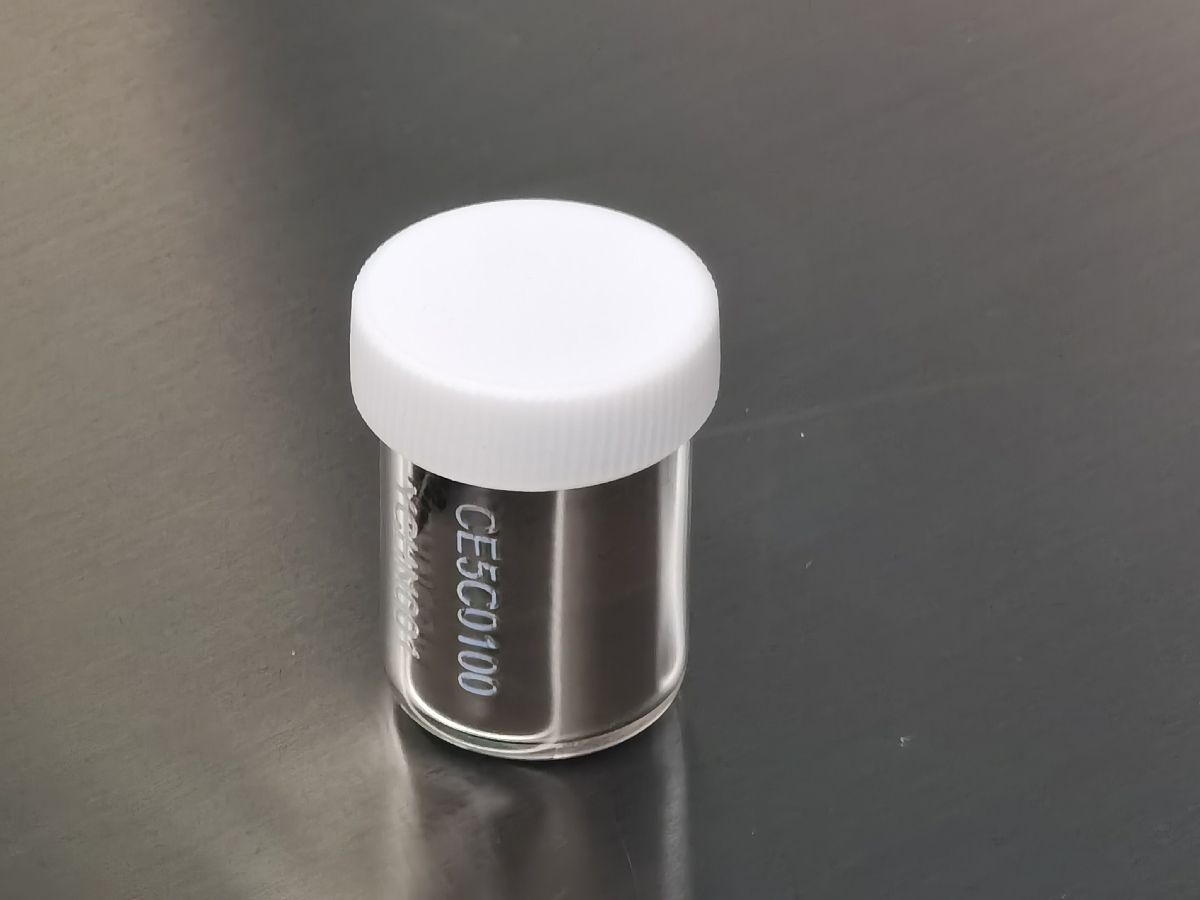
Photo taken on Dec 25, 2021 shows the Chang'e-5 lunar samples which will be stored for backup in Shaoshan, Central China's Hunan province. [Photo/Xinhua]
A handover ceremony of Chang'e-5 lunar samples, used for backup storage, was held Saturday in Shaoshan, Central China's Hunan province, which is also the home city of the late Chinese leader Mao Zedong.
The samples, brought back by the Chang'e-5 probe, were handed over to Hunan University by the China National Space Administration (CNSA) and will be stored in the newly constructed base, the country's sole one dedicated to lunar sample backup storage.
The lunar samples collected by China for the first time is a significant accomplishment jointly achieved by tens of thousands of sci-tech workers, said Zhang Kejian, head of the CNSA.
Storing the lunar samples in Chairman Mao's hometown is a profound tribute to his contributions to the Chinese nation and the people of the world, and it honors his long-cherished dream of reaching the moon, Zhang said.
The storage base, which was approved to be built in 2014, was completed by Hunan University and passed the technical evaluation this July. Located in a village, the courtyard-style building is decorated in grey and white and surrounded by trees.
It will facilitate the long-term safe storage of lunar samples and avoid the impact of extreme conditions such as natural disasters on the samples, the CNSA noted.
To safely and stably store the lunar samples, the conditions are demanding, said Hu Hao, chief designer of the third phase of China's lunar exploration program.
He introduced that the backup storage device was designed and developed to be filled with nitrogen, and the internal pressure was slightly higher than atmospheric pressure.
On Dec 17, 2020, the Chang'e-5 probe returned to Earth, retrieving a total of 1,731 grams of lunar samples, mainly rocks and soil from the moon's surface.
According to China's lunar sample management regulations, the lunar samples will be generally used for four purposes, namely permanent storage, backup permanent storage, research and public welfare.
In July, China delivered the first batch of lunar samples, weighing about 17 grams, to 13 institutions. And later in October, the second batch weighing about 17.9 grams was distributed to scientists from 17 research institutions.
The fourth phase of the lunar exploration program is underway. The CNSA will actively promote scientists at home and abroad to conduct in-depth research on lunar samples and to strive for greater scientific achievements, Zhang said.